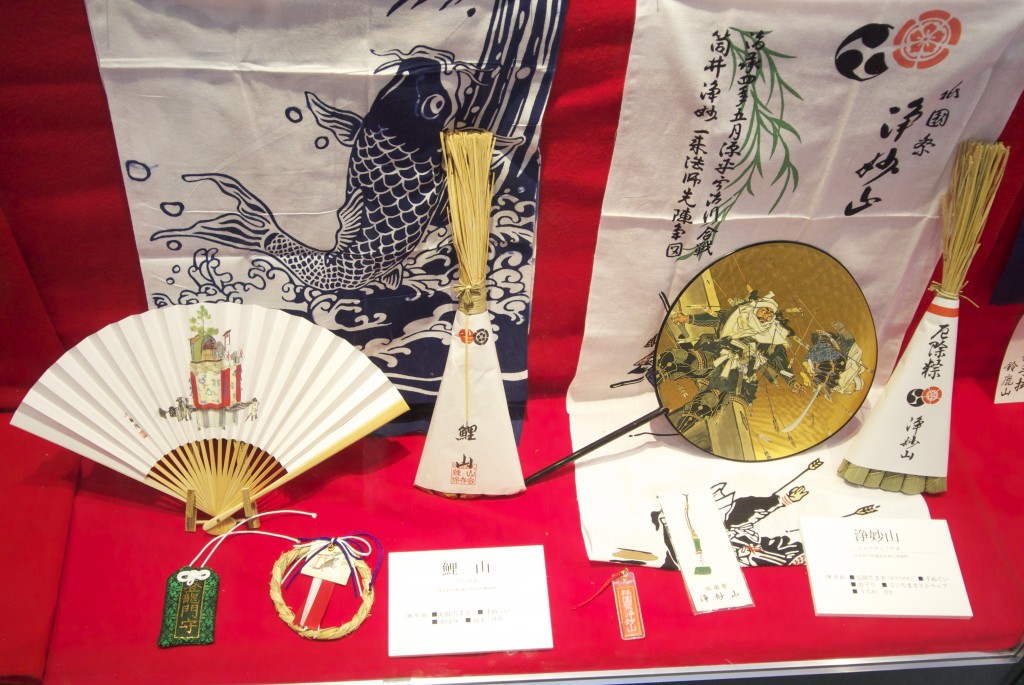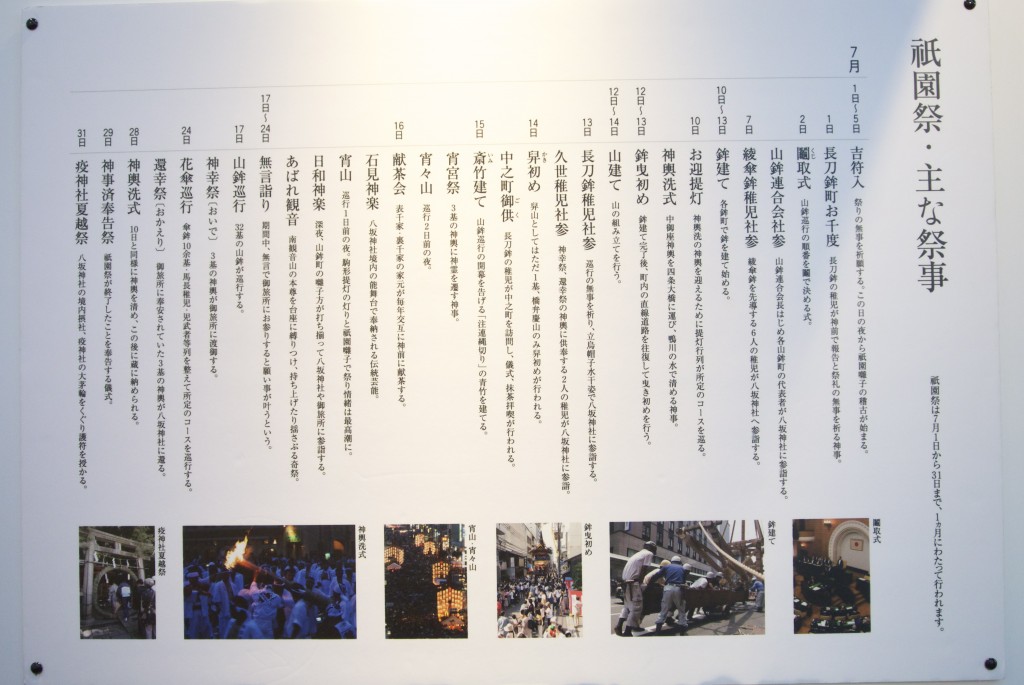
Charms and decorations that will be put on one of the floats in the Gion procession
The Gion Festival is one of Kyoto’s Big Three Festivals, along with the Aoi Festival and the Jidai Matsuri (Festival of Ages). For many people, it’s the most enjoyable. The big parade takes place on the morning of July 17, and on the two evenings before that the central streets of the city are packed with people sauntering around to enjoy the atmosphere and view the floats. For two magical evenings, the streets are free of noisy polluting vehicles.

The chigo mounted on a sacred horse (photo courtesy Micah Gempel)
What many people don’t realise, however, is that the festival is actually a month-long event which kicked off on July 1. As with the Aoi Festival, there are lots of pre-events to do with preparations and purifications.
If the Saio-dai representing the priestess-princess of old is the central figure of the Aoi Festival, then the chigo plays a central part in the Gion Festival – selection of the young boy, who is a vehicle for the kami, has already taken place (for which a handsome amount of money is paid, so I’m told).
Over the next couple of weeks, the impressive Gion floats (which come in two types, yama and hoko – more of that anon) will be taken out of storage and decorated in traditional fashion. The mikoshi will be purified in the Kamogawa river, and Gion bayashi festival music will be heard all around town (thanks to being piped throughout the shopping district).
It all helps build up to the 15th, 16th and 17th when good spirits and communal revelry will replace the grim reality of downtown traffic jams.
The Gion Festival has begun; let’s start celebrating!

A display of all the Gion Festival events in the month of July
********************************************************************
For previous pieces on the Gion Festival, please click here and here. For a Kyoto Shinbun account of the opening rites, see here. For a full list of the Festival events during the month of July (and the order of floats in the procession), click here.
For the next article in this series, click here for Part Two (Western Input). To understand the role of the Hindu deity Gozu Tenno in the festival, click here.

Leave a Reply